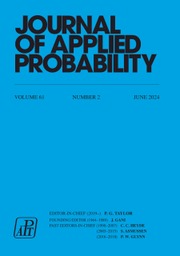No CrossRef data available.
Article contents
Averaging principle for the fast–slow McKean–Vlasov stochastic differential equations driven by mixed fractional Brownian motion
Published online by Cambridge University Press: 05 June 2025
Abstract
This paper focuses on the averaging principle concerning the fast–slow McKean–Vlasov stochastic differential equations driven by mixed fractional Brownian motion with Hurst parameter  $\tfrac{1}{2} < H < 1$. The integral associated with Brownian motion is the standard Itô integral, while the integral with respect to fractional Brownian motion is a generalized Riemann–Stieltjes integral. Under the non-Lipschitz condition and certain appropriate assumptions regarding the coefficients, we initially establish the existence and uniqueness theorem for the fast–slow McKean–Vlasov stochastic differential equation driven by mixed fractional Brownian motion. Subsequently, we demonstrate the averaging principle of the fast–slow McKean–Vlasov stochastic differential equations, signifying that the slow stochastic differential equation converges to the associated averaged equation in terms of mean-square convergence.
$\tfrac{1}{2} < H < 1$. The integral associated with Brownian motion is the standard Itô integral, while the integral with respect to fractional Brownian motion is a generalized Riemann–Stieltjes integral. Under the non-Lipschitz condition and certain appropriate assumptions regarding the coefficients, we initially establish the existence and uniqueness theorem for the fast–slow McKean–Vlasov stochastic differential equation driven by mixed fractional Brownian motion. Subsequently, we demonstrate the averaging principle of the fast–slow McKean–Vlasov stochastic differential equations, signifying that the slow stochastic differential equation converges to the associated averaged equation in terms of mean-square convergence.
Keywords
MSC classification
Information
- Type
- Original Article
- Information
- Copyright
- © The Author(s), 2025. Published by Cambridge University Press on behalf of Applied Probability Trust


